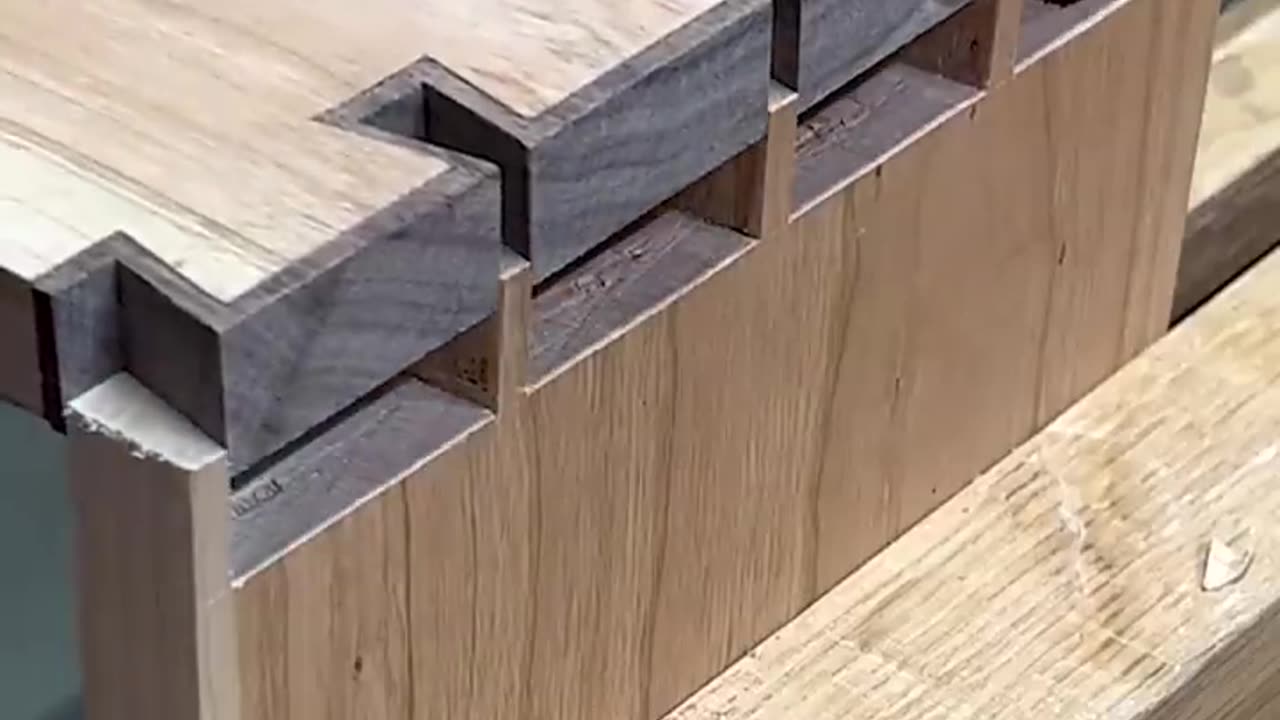Premium Only Content

Amazing Woodworking Techniques & Wood Joint Tips
Woodworking is a versatile and rewarding craft that allows you to create functional and beautiful pieces of furniture and art. Here are some amazing woodworking techniques and wood joint tips to enhance your woodworking skills:
Dovetail Joints: Dovetail joints are known for their strength and aesthetics. They are commonly used in drawer construction. To create dovetail joints, you'll need a dovetail saw and chisels. Precise measuring and cutting are essential for a tight fit.
Mortise and Tenon Joints: Mortise and tenon joints are used to connect two pieces of wood at a right angle. They provide good strength and stability. Variations include through, blind, and wedged tenons.
Half-Lap Joints: Half-lap joints are simple and strong. They involve removing half the thickness of each piece and fitting them together. This joint is often used for building frames and cabinets.
Biscuit Joints: Biscuit joints involve creating matching slots in two pieces of wood and then inserting a wooden biscuit (oval-shaped wood piece) with adhesive to join them together. This technique is excellent for aligning edges in panel glue-ups.
Box Joints: Box joints, also known as finger joints, create a striking pattern when properly executed. They are strong and are often used in drawer construction and box making.
Dowel Joints: Dowel joints involve drilling holes in two pieces of wood and inserting dowel rods with adhesive to connect them. This is a simple and effective method for aligning and joining parts.
Rabbet and Dado Joints: Rabbet joints involve cutting a recess along the edge of one piece of wood, while dado joints involve creating a groove or channel in the surface. These joints are often used for cabinet backs, shelves, and other structural components.
Woodturning: Woodturning is a technique where a piece of wood is rotated on a lathe while a cutting tool is applied to shape and carve it into a symmetrical object, such as bowls, spindles, and vases.
Inlay and Marquetry: Inlay involves embedding small pieces of contrasting wood, metal, or other materials into a wood surface to create intricate patterns. Marquetry is similar but typically involves the use of veneer for intricate designs.
Wood Carving: Wood carving allows you to create intricate designs and sculptures in wood using carving tools and techniques. It's an art form in itself, with various styles and approaches.
Wood Finishing: Properly finishing your woodworking projects is crucial. Techniques like staining, varnishing, oiling, and waxing can enhance the appearance and protect the wood.
Woodworking Jigs: Jigs are tools or templates that help you make precise cuts, angles, and joints. They are essential for achieving accurate and repeatable results.
Wood Selection: Choosing the right type of wood for your project is crucial. Consider factors such as grain pattern, hardness, and color to match your desired outcome.
Safety: Always prioritize safety in your woodworking endeavors. Use appropriate safety gear, like safety glasses and hearing protection, and follow safety guidelines for using power tools.
Practice: Woodworking, like any skill, improves with practice. Start with simple projects and gradually work your way up to more complex ones as you build your skills and confidence.
Woodworking is a deeply satisfying hobby or profession that offers endless possibilities for creativity. Whether you're a beginner or an experienced woodworker, mastering these techniques and tips will help you create impressive and durable woodworking projects.
-
 LIVE
LIVE
Mally_Mouse
1 hour agoLet's Yap About It - LIVE!
444 watching -
 LIVE
LIVE
Film Threat
7 hours agoJUSTINE BATEMAN SPEAKS! LIVE INTERVIEW | Hollywood on the Rocks
227 watching -
 4:02
4:02
Guns & Gadgets 2nd Amendment News
1 hour agoBREAKING NEWS: FBI Director RESIGNS
119 -
 11:24
11:24
Dr David Jockers
1 hour agoHow High Blood Sugar Destroys Your Arteries & How To Fix It
-
 LIVE
LIVE
StoneMountain64
3 hours ago1st person FORTNITE is here.
243 watching -
 1:46:40
1:46:40
The Pat Bev Podcast with Rone
5 hours agoWhat's Wrong the the Eastern Conference & How Do the Lakers Save Their Season? Ep. 113
3.51K -
 2:57:20
2:57:20
The Charlie Kirk Show
4 hours agoNo, Caitlin Clark, Noooo! + The Confirmation Odds + AMA | Pirro, Hilton, Halperin | 12.11.24
127K50 -
 1:36:13
1:36:13
The Quartering
3 hours agoBrett Cooper QUITS Daily Wire, Alex Jones WINS Lawsuits, White People Bad & More
49.6K27 -
 1:05:11
1:05:11
Russell Brand
5 hours agoPandemic 2.0? The Promise of Disease X - SF512
111K140 -
 57:21
57:21
LFA TV
18 hours agoJOHN FETTERMAN JOINS TRUTH SOCIAL?! | LIVE WITH HANNAH FAULKNER 12.11.24 3pm EST
9.2K2